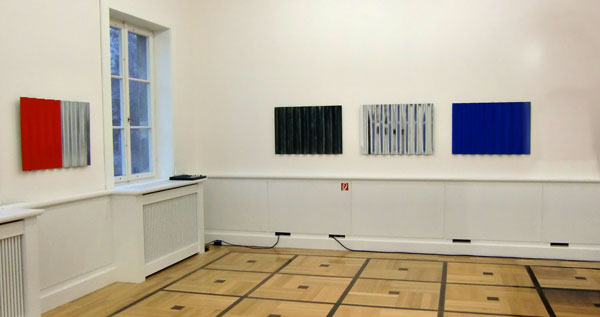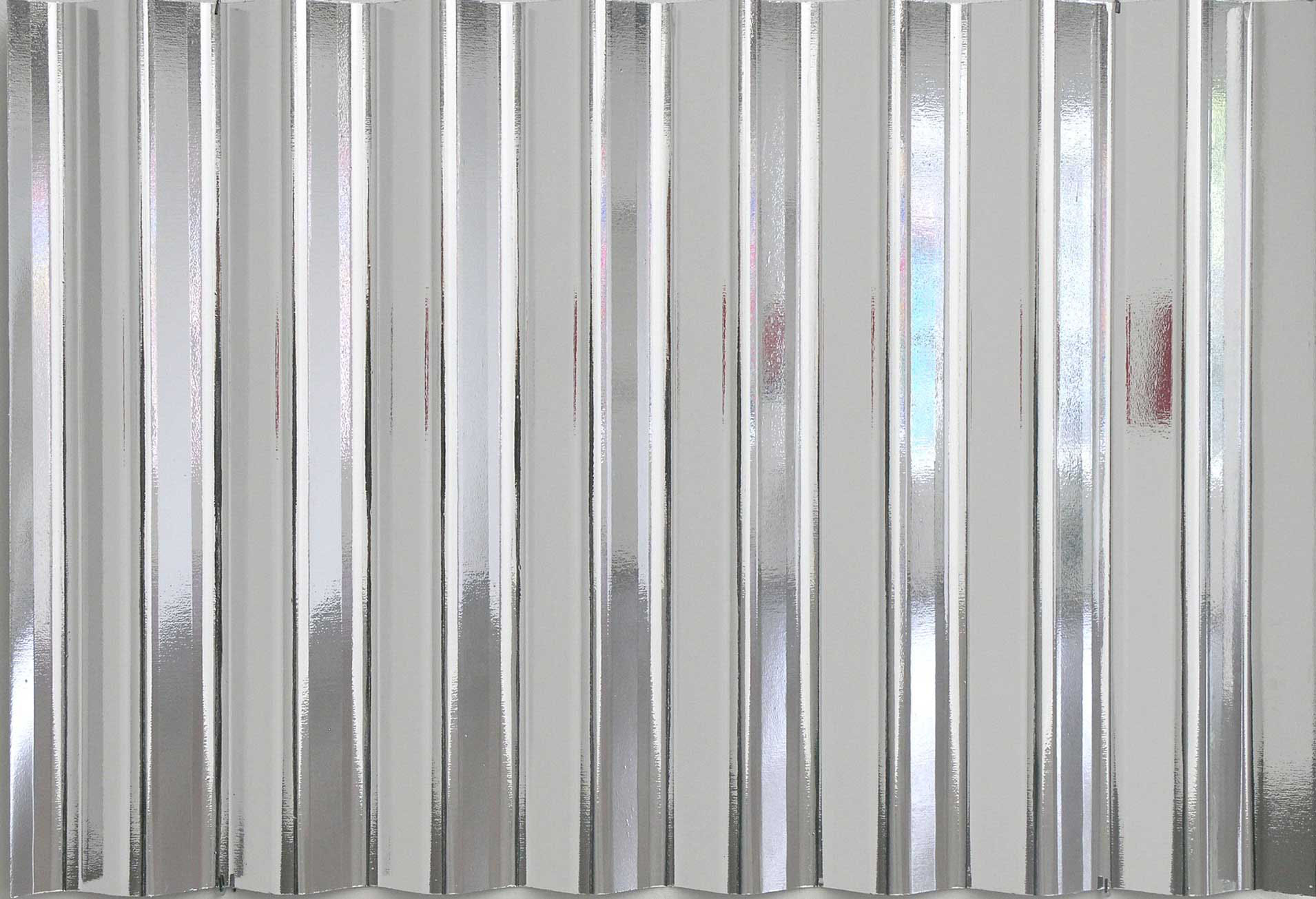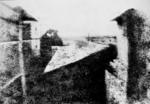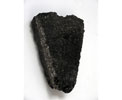 Sans point de vue at the exhibition Farbe materiell – Farbe immateriell, Europäische Zentrum der Künste Hellerau, Dresden 2009
Sans point de vue at the exhibition Farbe materiell – Farbe immateriell, Europäische Zentrum der Künste Hellerau, Dresden 2009

|
A reminescence to the 19th century is Tim Otto Roth's survey sans point de vue about light sensitive substances. The artist reveals with a collection from asphalt to yellow chromium compounds not only the materiality of the photographic process, but he also documents the varying inherent colours of photo sensitive substances and their change of colour due to the impact of light during the time of the exhibition. |
Eine Reminiszenz ans 19. Jahrhundert ist auch Tim Otto Roths Untersuchung sans point de vue zu lichtempfindlichen Stoffen. Thematisiert wird mit der Kollektion vom Asphalt bis hin zur giftgelben Chromverbindung nicht nur die Materialität von lichtempfindlichen Prozessen, sondern auch die Eigenfarbigkeit photosensibler Substanzen und deren prozessuale Veränderung durch die Lichteinwirkung über die Ausstellungszeit hinweg. |
|
The serie's title refers to the first photographically fixed camera pictures made in the 1820's by Joseph Nicéphore Niépce [1765-1833]. The French pioneer called them point de vue – engl. viewing point – with regards to the perspectival composition of the camera obscura record. Sans point de vue abandons this perspectivity reflecting the two constituting procedures of the photographical process and its inherent aesthetics separately: the light sensitive recording process and the optical process. Among others corrugated steel plates are used as a mount for this exploration: Different light sensitive substances or optical elements are applied to the plates. Also Niépce used tin plates as a mount for his first photographs. As light sensitive substance he didn't use silver salts but Syrian asphalt dissolved in essential oils. |
Der Titel spielt auf die ersten photographisch fixierten Kamerabilder Ende der 1820-er Jahre von Joseph Nicéphore Niépce [1765-1833] an, die dieser in Anspielung auf die Perspektive in den Bildern als point de vue – also Ansichtspunkt – bezeichnete. Sans point de vue verabschiedet sich genau von dieser Perspektivität, indem es die beiden das photographische Verfahren konstituierenden Verfahren getrennt voneinander reflektiert und deren inhärente Ästhetik thematisiert: den lichtempfindlichen Aufzeichnungsprozeß und das optische Verfahren. |
|
A triangular sculpture cut out of an asphalt road cover points to the fact that every bitumen roof and asphalted road underlies a process of light based deterioration. A sugar loaf impregnated with a dichromate salt changes relatively fast from a lucid yellow to a deep brownish tone. The materiality of the silver emulsion still in use today for black and white papers is illustrated by a silver gelatine sculpture. The cheese white sculpture, fabricated according to a historic receipt, shrinked more an more over the time of the exhibition changing continuously its colour into a grey. A big paper with a green water colour like circle out of chlorophyll points to the fact that with the photosynthesis life on earth depends on a living photosensitive process. Here the artist has extracted in elaborate procedure the chlorophyll out of green algae. By its slow fading the work illustrated not only the change of colours, but that also the disappearance of colours is a constitutive element of light sensitive processes. |
Daß einem lichtbedingten Alterungsprozeß jedes Teerdach und jede Asphaltstraße unterliegt, darauf verweist eine dreieckige Skulptur, die aus einer Straße herausgeschnitten wurde. Ein mit Bichromatsalz imprägnierter Zuckerhut veränderte seine Farbe recht schnell von einem leuchtendem Gelb zu einem tiefen Schwarzbraun. Die Materialität von der heute noch in Schwarzweißpapieren verwendeten Emulsion aus Silber und Gelatine führt eine Silbergelatineskulptur vor. Die käsigweiße Skulptur, die nach einer historischen Rezeptur für Silberemulsionen hergestellt wurde, schrumpfte zunehmend über den Ausstellungszeitraum hinweg und veränderte ihre Farbe ins Grau hinein Ein großes Blatt Papier mit einem grünen aquarellartig aufgetragenen Kreis aus Chlorophyll macht darauf aufmerksam, daß mit der Photosynthese das Leben auf der Erde von einem lebendigen lichtempfindlichen Prozeß abhängig ist. Der Künstler hatte hierfür im Labor in einem aufwendigen Prozeß das Chlorophyll aus Grünalgen extrahiert. Die Arbeit zeigt auch durch das langsame Ausbleichen über den Ausstellungszeitraum hinweg auf, daß nicht nur das Verändern des Farbtons sondern auch das Verschwinden von Farbe ein konstitutives Element von lichtempfindlichen Prozessen ist. |
|
|
Past exhibitions:
|
|
Reviews:![]() 25. April 2009
25. April 2009
"Colour-Sex - Der „Verein für aktuelle Kunst” in Oberhausen wagt sich auf unbekanntes Terrain", Besprechung von Andrea Micke, Westdeutsche Allgemeine Zeitung: Text & zusätzliche Photostrecke






















